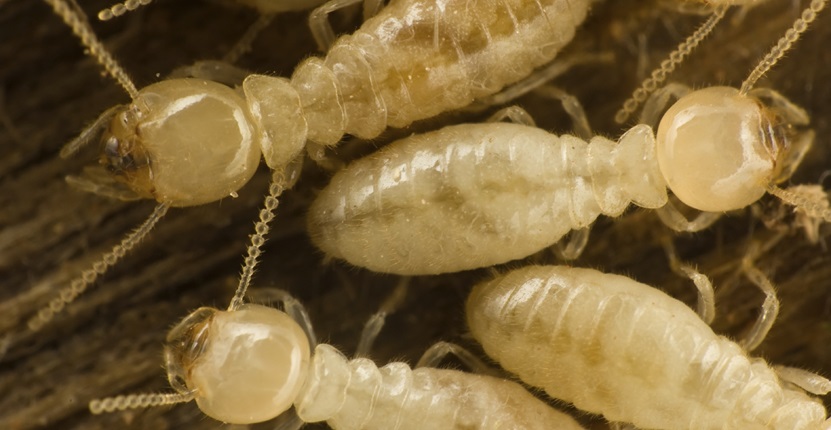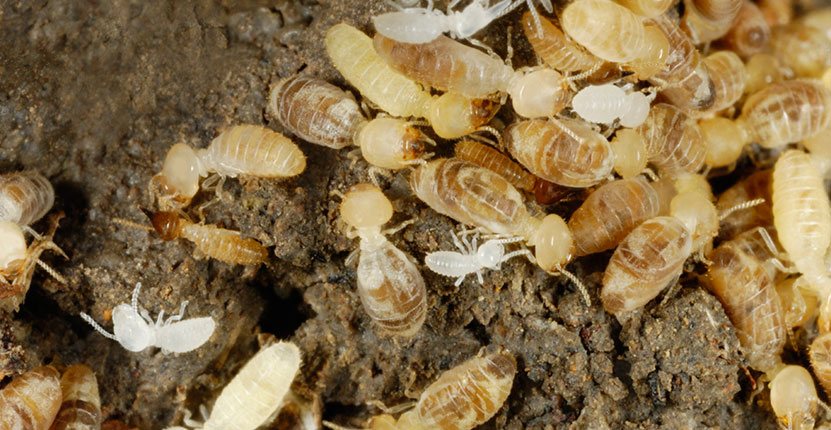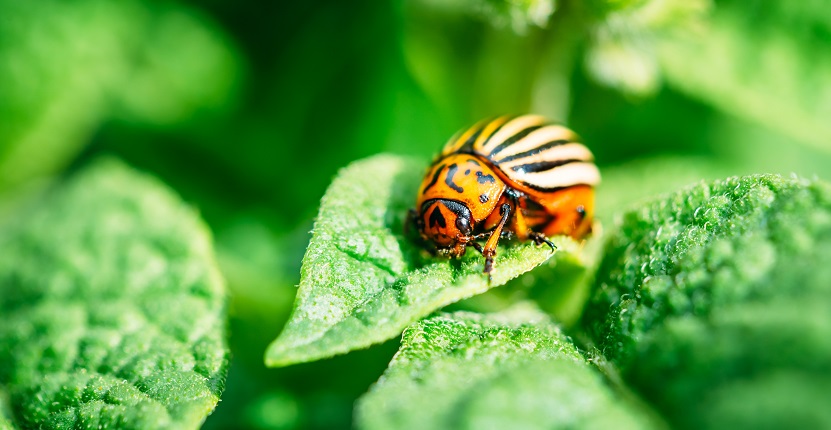Did you know that 1 out of 3 Australian homes experience the drawbacks of a white ants infestation? And if you are not careful enough, your home could be infested with termites too! To avoid being in such a situation or if you have found yourself already in such a situation, then this detailed guide is exactly what you need to reduce further damages.
Termites Also Known as White Ants Under Australian Conditions
In this guide, you will find everything that you need to know about this notorious species. It will also give you all the information that you need right from inspections to control method options to help you protect yourself and your property against structural damage. According to APCA’s surveys, an unprotected house is even more susceptible to getting infested by subterranean termites at least once in its lifetime.
Additionally, due to the use of certain susceptible building materials and architectural designs, it has become even easier for them to make their way into a property which has therefore caused an increase in wood damage to Australian homes.
The Destruction and Implications of a White Ant Infestation
One of the most common species in Australia is subterranean termites. They are known for their destructive behaviour and causing the majority of timber destruction to the structure of properties. Not just furniture, but also flooring and walls made from timber are likely to be targeted by termites. The damage caused is far worse than all natural disasters combined, even wildfires, floods and storms.
Additionally, most insurance policies do not cover the costs of damage repair that is due to an infestation. So, it would be advisable to check with your insurance provider if your policy covers pest damage or not.
- Where to Look for Them?A few potential hide spots are inside your property’s structure, your furniture, trees surrounding your home or in the backyard, building material lying around your home, and other areas of your property that have high moisture levels or decaying wood.
As they feed on cellulose, commonly found in timber, they build their nests underground and travel through mud tubes for up to 100 meters. You should keep in mind that while they may simply be feeding to exist, it would come at the cost of extreme damage to your property’s structure. When it comes to infestations, both established and developing areas are at risk if it is not properly protected and insufficient prevention methods.
- What Risks are Involved?It is extremely easy for white ants to make their way onto your property undetected as they are small and do not require much space to move around, all they need is a gap or hole as small as 2mm. If there are no existing gaps, they could even chew their way through the joints or fillings in your structure. Once they have made their way into your house, it is almost impossible to get rid of them without professional assistance. And if you wait too long, your property could face many risks such as structural damage, furniture and electrical destruction which could mess with the insulation.
White Ants: What are They?
White ants also known as termites are timber-eating pests that are known for being highly destructive and secretive, making it challenging to learn of their existence until it is too late and the damage is worse.
As they live in a colony separate from their feeding ground, it is hard to find their nest and eliminate it from the roots. Although there are around 300+ species in Australia, not all are a threat to your property but most of them are as they can destroy your home from the inside out.
When does the White Ant Season Begin?
White ants season begins in the summer as they are known to multiply and thrive during that season. Once they have successfully grown and multiplied, they leave the colony in search of a new feeding and resting ground. It is during this time that most houses fall prey to these infestations due to the abundance of food sources and shelter.
However, regardless of what season you may be in, it is essential to conduct a home inspection for insect activity and get a reliable timber protection plan in place. Additionally, different species might follow a different timeline. For example, drywood termites usually go out in search of food and a new nest during the late summer.
How to Identify White Ants?
They are similar to black ants in size and shape. However, they are creamish white as the name suggests and can grow anywhere between 4-10mm. Additionally, their body is thicker and the colour of their heads would be either brown or orange. However, even after all these specifications, it is easy to mistake a termite for another bug, which is why you must get a professional expert who has sufficient experience in insects, to inspect your house to avoid any confusion and to be able to get the right treatment for effective results.
How can They get Inside?
As we mentioned earlier, due to their small bodies, they can easily enter your house undetected and can do so in several ways, some include windows, spaces in between pipeworks, gaps in doors, air vents, holes in the foundation, etc. They can also travel through the moist soil or ground or if the nearby tree is infested with such insects. Therefore, it is essential to check your surroundings for insect activity as well as inspect second-hand goods that you may buy as that could be one way they invade your space too.
Food Sources: What do They Eat?
As we mentioned earlier, termites are attracted to cellulose that is found in timber and wooden items. They feed on susceptible wooden items from the inside out leaving only a thin layer of paint and wood. If needed, they will also fill up big gaps and holes in a structure with soil to maintain the moisture within and prevent themselves from dying of dehydration.They use pheromone cues to communicate and get moisture from decomposing wood and dirt. Along with their excellent abilities to survive and highly structured social environments, white ants are well-known for their knack for engineering. Keeping these very traits in mind, advanced baiting systems use this to their advantage.
Lately, the market has also been introduced to modern baits that have prolonged deadly consequences. While feeding and grooming these white ants are exposed to and transfer the bait to all the others in the colony which helps in controlling the size of an infestation.
Symptoms of an Infestation
Usually, it is extremely challenging to identify that you are dealing with a white ant infestation in your house. It is only until later on when the damage and destruction have worsened to the extent that your infested item or wall is completely eaten away from the inside, that you would be able to learn of the infestation.
This is because they are extremely small, notorious, secretive and quiet. However, there are a few other telltale signs that indicate an active infestation which are often overlooked.
Some of These Signs Include:
- The discarded wings of the top-level termites
- Mud tubes or tunnels around your walls
- Your wooden items or structures suddenly sound hollow from within
- Spotting a pile of sawdust near your wooden furniture
History & Characteristics
White ants, commonly referred to as subterranean termites are not ants at all, despite their name. They are noted for consuming wood and are ground-dwelling insects descended from ancient cockroaches. The oldest known termite, which is thought to be 220 million years old, was actually discovered preserved in amber fluid in Arizona. An interconnected caste structure exists inside a white ant colony, with each caste member having a distinct function to perform.
What are Their Behaviour Patterns and Life Cycle?
The queen white ant turns into an egg-laying machine after mating. She has a 25-year lifespan and can lay over 2,000 eggs daily. Every job in the nest, from gathering food to building tunnels, maintaining and growing the nest, grooming one another, and providing for the rest of the colony, falls to the worker ants. Their longevity varies by species, and they labour nonstop for several years.
Certain soldier ants can trap their adversaries by expelling a sticky latex through their sharp, pointed snout. When shelter tubes or damaged timber are opened, they are frequently the first that homeowners encounter. They rush out to guard the hole and crush assailants like ants while the worker ants fix the damage.
Swarmers are carried around by the wind and have eyes, but they are not good flyers. After landing, they moult their wings and look for a mate to become the colony’s new king and queen. When an adult white ant nest is well established, swarmers are released in vast numbers and employ pheromone chemical signals to attract a partner. Swarming white ants are a dead giveaway that a sizable white ant colony is close by.
Which Species are Known for causing House Destruction in Australia?
Identification is key in effective control and removal because if you have identified the pest and its species incorrectly, it would majorly impact the success of your control and removal solution. While some species of termites can’t resist dry and seasoned timber some species are attracted to other food sources. What food sources? Find out below:
- Throughout Australia, Coptotermes acinaciformis has become common, especially in places with plenty of eucalyptus trees and urban areas. They’re responsible for over 70% of major construction damage and can also construct their nests beneath concrete slabs on lower levels of buildings or enclosed patios. Aside from their primary colony, these white ants can also form satellite nests in wall cavities of structures that have a consistent supply of moisture, like leaking shower recesses, damaged gutters, or rusted pipeworks.
- The world’s oldest species, Mastotermes darwiniensis, is unique to Australia. These ants construct their underground nests in the root crowns and trunks of trees and stumps. They have the potential to seriously harm living trees, bushes, fruit and vegetable crops, rubber trees, sugarcane, bridges, structures, posts, poles, bitumen, glass, bagged salt, wheat, leather, plastic, or lead-sheathed wires, hide, rubber tires on tractors and glass.
- Schedorhinotermes intermedius is distinguished for its inclination to “gouge” affected timber and its liking for construction nails. You will notice both major soldiers and small soldiers. However, if the majority of the ants are huge soldiers, it is likely that the colony is enormous and causing severe destruction of structural timbers. They construct their nests in the stumps of trees, in the root crowns of dead, living and diseased trees, beneath buildings or covered patios, etc.
- Nasutitermes exitiosus is especially prevalent in regions with a high concentration of eucalyptus gum trees and urban areas. They create mound nests that are 30 to 75 centimeters above the ground. By removing the nest’s top and treating the inside, these nests are easy to take control of.
- Coptotermes lacteus have a history of attacking wood constructions that are in contact with the ground, including poles, dead trees, fences, and stumps. Their nests are readily controlled by removing the top and applying insecticide. They are often constructed as mounds up to two meters above ground, with firm clay walls.
- When subjected to weathering or soil contact, Nasutitermes walkeri can cause damage to moist timbers and are frequently observed attacking fences, poles, and other timber structures. Their nests are usually located in trees on a large branch or the main trunk.
- Due to a few similarities, Heterotermes ferox is frequently confused with the more violent and destructive Coptotermes acinaciformis. They construct their nests in stumps, logs, or other wood that has visible symptoms of rotting or decomposing and is in direct touch with the ground.
How should a Termite Inspection be Conducted?

If you have piles of wood stored in your backyard, examine those as well for any suspicious activity. Do not forget to check the sturdiness of the soil around your house, you can do so using your own body weight. You should also inspect the trees and their branches near your home as you could also be dealing with another species.
What to do Next If You Identify Insects?
White ants have really strong survival instincts and if they feel threatened by you or anyone else, they will leave the infested area and seek shelter elsewhere. While others have tried this and misunderstood their temporary exit as permanent. That is not the case in reality, while they may leave temporarily, they would return again once they feel like there is no longer a threat to their existence.
Additionally, when they do return, they could pick an entirely new wooden item to chew on and a new nesting ground, which would continue the vicious cycle of hide and seek again. Therefore, it is best to call a professional and get your house inspected thoroughly in an efficient manner so that you do not scare them away or make them feel threatened enough to leave.
Warning! Leave Them Alone for Now
The right way to deal with an infestation isn’t by trying to chase them away yourself or attacking them as that would make their survival instincts kick in and they would run to hide away their nest and queen which would make it even more challenging than it already is to find and eliminate an infestation.
The best way for you to terminate these insects is by calling a professional pest control company to conduct a professional inspection by an expert and get the right treatment for effective results. This would include professional baiting systems and a bit of patience from your end to see this infestation to its end without any recurring infestation. This is only possible because by placing baits in the infested area, these pests would consider it harmless and feed on it.
Additionally, due to their tendency to feed the entire colony, they would end up taking the poisoned bait back to the others which would slowly and steadily result in the death of the entire colony.
Too Late? What to do If You didn’t Leave Them Alone
If you saw this too late and only decided to read up about infestations after taking apart your infested item also known as their feeding ground, then you need to act quickly now and close it back so that they can go about their business without feeling threatened by you. You can do so by using duct tape, sealing up the gaps and putting it back together. Not permanently but just until you have a professional expert in your house examining the infestation.
If you are a Melbourne resident and are dealing with a pest infestation, especially one dealing with white ants, then you can contact our experts today and get a same-day inspection of your house. Our skilled and certified technicians will come up with a wholesome solution and management plan to ensure the infestation is taken care of completely and never returns.




